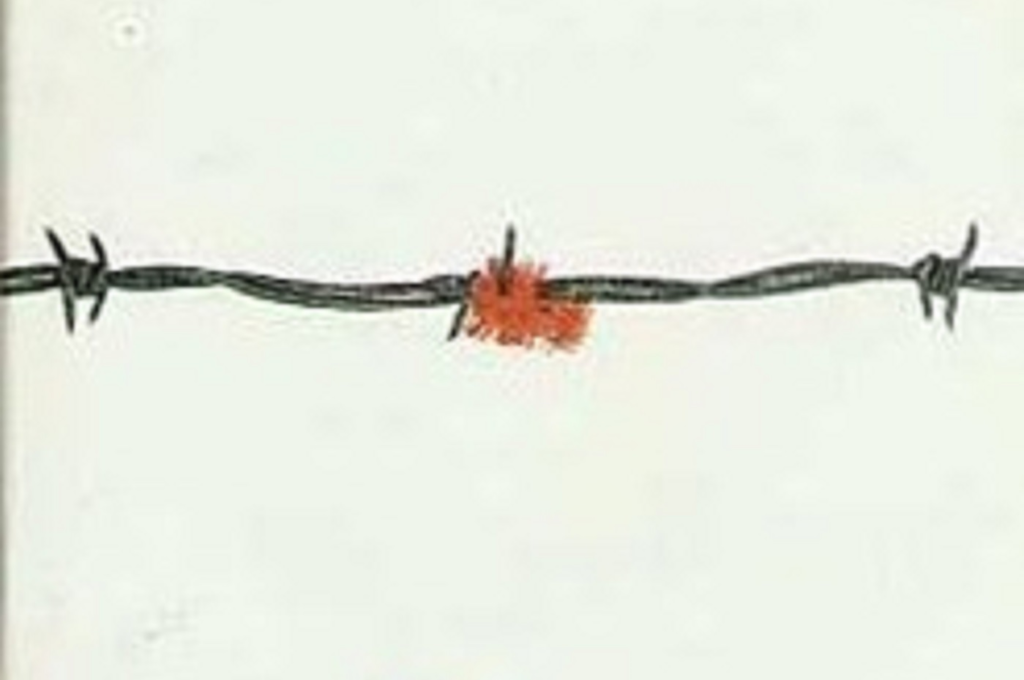Sixty years ago this summer, Adolf Eichmann stood trial in Israel for his role in the Holocaust. Although Hannah Arendt’s Eichmann in Jerusalem, which famously (or notoriously) explores the “banality of evil,” has come to dominate our understanding of the trial, she was not the only major writer there. The British novelist Muriel Spark attended some of the trial, too, and she wove her experience there into her most ambitious work, The Mandelbaum Gate (1965).
It is an ambitious novel—at once among her most personal and her most political—and features a fascinating portrait of Eichmann’s ability to obscure the reality of the Holocaust. But it’s also one of Spark’s most disappointing works (she jokingly referred to it as her “magnum opium”). This is, in large part, because the latter part of the book fails to pursue the trial’s impact on the central character, creating a sense of anti-climax that ironically echoes a feature of the trial itself.
The Dangers of Categorizing People
Spark visited Jerusalem in 1961 on a pilgrimage to sites that were significant both to her adopted Catholic faith and to her Jewish ancestry on her father’s side. It was, as her biographer Martin Stannard put it, part of “her self-questioning,” which “touched delicate matters after the Holocaust, matters she wanted only to investigate with the full power of an undistracted mind.” The heroine of The Mandelbaum Gate, Barbara Vaughan, is in important respects a stand-in for Spark: she is a British, half-Jewish (though on her mother’s side) Catholic convert visiting the Holy Land. Unlike Spark, however, she’s also awaiting word from her fiancé, a divorced archaeologist who’s seeking an annulment. Meanwhile, a busybody colleague has followed Barbara to Jerusalem, hoping to thwart her marriage plans. (I told you it was an ambitious novel.)
Start your day with Public Discourse
Sign up and get our daily essays sent straight to your inbox.Some of the novel’s most compelling passages occur when Barbara reflects on, or is challenged to reconcile, her disparate ethnic and religious backgrounds. A Jewish friend tells her, “You’re British. Well, that’s all right, more or less. You’re a Catholic convert—O.K. But you’re a half-Jew. The three together are a lot.” The habit of winnowing people down to their ethnic essences frustrates Barbara, who insists that “one doesn’t altogether know what one is. There’s always more to it than Jew, Gentile, half-Jew, half-Gentile. There’s the human soul, the individual. . . . Something unique and unrepeatable.” When an impertinent tour guide challenges her identity as both Jew and Gentile, she rebuts him by describing her unique childhood, including “the Golders Green Jewishness of her mother’s relations and the rural Anglicanism of her father’s, the Passover gatherings on the one hand and the bell-summoned Evensongs on the other.” Even this vivid approach strikes her as too simplistic, though, and Barbara insists that “her parents themselves were, of course, exceptional, having broken away from their respective traditions to marry each other. And she herself was of course something else again.” Of course she was something else again—because all individuals are more than just the pasts they inherit or the sum of their ancestors.
The dangers of categorizing people, of overlooking the individual and the soul, are evident during the Eichmann Trial. Of her Russian Jewish grandparents, Spark once said, “Had it not been for their emigration . . . [I] would have been a bar of soap.” Thus, it’s not surprising that the trial—which stretched from April to December 1961—makes a cameo appearance in the novel. Spark attended some of the trial as a correspondent for the Observer; her character Barbara obtains tickets through a Jewish cousin who is serving as a consultant for the prosecution.
The dangers of categorizing people, of overlooking the individual and the soul, are evident during the Eichmann Trial.
Mechanistic, Ritualistic Horror
Although Spark devotes only a few pages of this long novel to it, the scene has a profound effect on Barbara’s journey. She is struck by the language and imagery of Eichmann’s testimony, finding them consistently inappropriate and ill-suited for their subject. On some occasions, his empty mechanical language belies the horror of the Holocaust: “Minute by minute throughout the hours the prisoner discoursed on the massacre without mentioning the word, covering all aspects of every question addressed to him with the meticulous undiscriminating reflex of a computing machine.” This “dead mechanical tick” is poorly suited for the massacre it described.
If Eichmann’s mechanical language seems too mundane for the occasion, Barbara is also troubled that the trial assumes a quasi-spiritual nature, and by “the ritualistic lines which the man in the glass box was repeating.” Eichmann’s evasion of responsibility, and his deferrals to the bureaucratic order of things, become prayer-like:
Bureau IV-B-4. Four-B-Four.
I was not in charge of the operation itself, only with transportation . . .
Müller needed Himmler’s consent.
I was not in a position to make any suggestions, only to obey orders.
And technical transport problems.
Strictly with time-tables and technical transport problems.
I was concerned strictly with time-tables and technical transport problems.
Bureau IV-B-4. Four-B-four-IV-B-4.
Barbara eventually senses that Eichmann “was not answering for himself or his own life at all, but for an imperative deity named Bureau IV-B-4, of whom he was the High Priest.” His repetitive replies explained “the complex theology in which not his own actions, not even Hitler’s, were the theme of his defence, but the honour of the Supreme Being, the system, and its least tributary, Bureau IV-B-4.” Meanwhile, Eichmann’s counsel faced the tribunal, “every now and then raising both arms as if bestowing a benediction upon the signs and tokens of his proper business in life.” Barbara sees it as “a highly religious trial,” though one in which God is replaced by impersonal human institutions.
Barbara also sees artistic analogues for the trial: its dreamlike aura reminds her of what “the anti-novelists induce,” and of “one of the new irrational films which people can’t understand the point of, but continue to see; one can neither cope with them nor leave them alone.” Eichmann himself becomes
a character from the pages of a long anti-roman [who] went on repeating his lines which were punctuated only by the refrain, Bureau IV-B-4. Barbara felt she was caught in a conspiracy to prevent her brain from functioning. . . .
“What are we waiting for?” duly said the English translator’s voice in the earphones.
-What are we waiting for?
-We’re waiting for Godot.
This reference to Samuel Beckett’s classic of anti-climax conveys Barbara’s frustrations, her sense of the proceedings’ inconclusiveness. Afterward, Barbara tells her friends that “it made me feel rather sick. It’s much more appalling than you’d think from the papers.” It even challenges her faith, “roll[ing] away the stone that revealed an empty hole in the earth, that led to a bottomless pit.” And it compels Barbara to make a decision that puts her life in danger.
In 1961, the gate of the novel’s title divided Jerusalem into two parts: Israeli-controlled West Jerusalem and Jordanian-controlled East Jerusalem. Barbara resolves to venture into Jordanian territory to “throw light on the ritualistic lines which the man in the glass box was repeating, or give meaning to her mesmerized presence on the scene.” What makes crossing the Mandelbaum Gate so risky for Barbara is that because she is a British national with Jewish ancestry, Jordanians would likely assume she is a spy and apprehend her. Warned of this danger, Barbara insists on “going to Jordan, anyway. I feel a terrible need to do something positive[.]” Some descriptions of the novel, including the one on Wikipedia and another by a recent publisher, suggest that Barbara crosses into Jordan to rendezvous with her fiancé. This is simply not the case: although he was an archaeologist working on a dig in Egypt, at this point in the novel he is in Rome seeking an annulment of his first marriage so he can marry Barbara in the Church. This common misinterpretation underplays the significance of the trial on Barbara’s actions.
Spark’s novel captures how Eichmann’s manipulation of language distracts from his crimes specifically and the Holocaust generally.
An Anti-Climactic End
Unfortunately, this is where the novel loses the plot. To protect Barbara in East Jerusalem, her friends disguise her as an Arab servant and guide her through her pilgrimage. But soon Barbara contracts scarlet fever and must be quarantined in a remote hideout that also houses prostitutes, an anti-Semitic spy, and even the colleague from Britain who’s pursuing Barbara to torpedo her engagement. Some scenes devolve into bedroom farce, on a par with an episode of Three’s Company but not quite on the level of Frasier.
Despite this shift in tone, the novel doesn’t entirely lose interest in questions of Barbara’s identity. During her quarantine, for example, Barbara becomes fed up with another character’s anti-Semitic commentary—“Really, let’s face it, Hitler had the right idea. . . . It’s a network on a world scale. The Jews. They’ve got us in a net.”—and attacks her. The overt anti-Semitism and Barbara’s visceral, direct reaction to it create a sharp contrast to the oblique and suppressed nature of the Eichmann trial, and the scene permits Barbara to demonstrate her attachment to her Jewish identity. And when Barbara crosses through the Mandelbaum Gate back into Israel at the end of the novel, the reader sees her ability to reconcile her Jewishness with her Catholicism. Disguised as a nun to pass through security, she runs “all along the narrow streets of the Orthodox Jews. . . . She wanted to run along the pavement of the sweet, rational streets. All the people in the shops had come to the doorways and the passers-by had stopped to stare at the astonishing thing.” Barbara is at home in her Catholic Jewishness—something that is not only astonishing, but, as she felt earlier, “unique and unrepeatable,” a reconciliation of apparently disparate identities. This image supports Ali Smith’s interpretation of The Mandelbaum Gate as “a book about divided states and one that goes out of its way, up against the worst historical odds, to honour the uniting, in each individual soul, of paradoxical impossible divisions.”
For the most part, however, the novel’s conclusion is marked by a sense of anti-climax that ironically echoes what had so frustrated Barbara during the Eichmann Trial. Although Spark establishes Eichmann’s testimony as a catalyst for Barbara’s continued pilgrimage, it’s never clear how Barbara thinks the excursion into West Jerusalem will help illuminate the trial. Perhaps the act of endangering herself to learn more about her Jewish ancestry and her Christian faith is a type of truth-seeking and devotion that challenges the obfuscation and pseudo-religiosity of the trial. But Eichmann is barely mentioned again, so it isn’t clear whether Barbara’s frustrations from the trial are resolved, whether the trip “give[s] meaning to her mesmerized presence on the scene.”
There are other remarkable elements of anti-climax. Frequent intimations of violence are only realized offstage and to minor characters. Barbara and her fiancé are dispatched quite abruptly: we learn that they “were married and got along fairly well together ever after.” The novel’s final lines even diminish the significance of the novel’s central metaphor, the Mandelbaum Gate itself: it is described as “hardly a gate at all, but a piece of street between Jerusalem and Jerusalem, flanked by two huts, and called that name because a house at the other end once belonged to a Mr. Mandelbaum.” (To be fair, history would soon support Spark’s suggestion of the gate’s contingency: the Israeli army destroyed the gate only a few years later, during the Six-Day War in 1967.)
Spark’s novel captures how Eichmann’s manipulation of language distracts from his crimes specifically and the Holocaust generally. And it shows just how much this abuse troubled Spark’s character, and perhaps the author herself. Yet the novel fails to satisfy or reassure the reader by showing precisely how the character’s dangerous pilgrimage manages to “throw light on” the testimony. This obscurity is one of the novel’s many missed opportunities. But perhaps that letdown, while detracting from the novel’s power, also demonstrates the incomprehensibility of the Holocaust and Eichmann’s brazen evasion of truth, which defied the narrative abilities even of one of the twentieth century’s great novelists.














